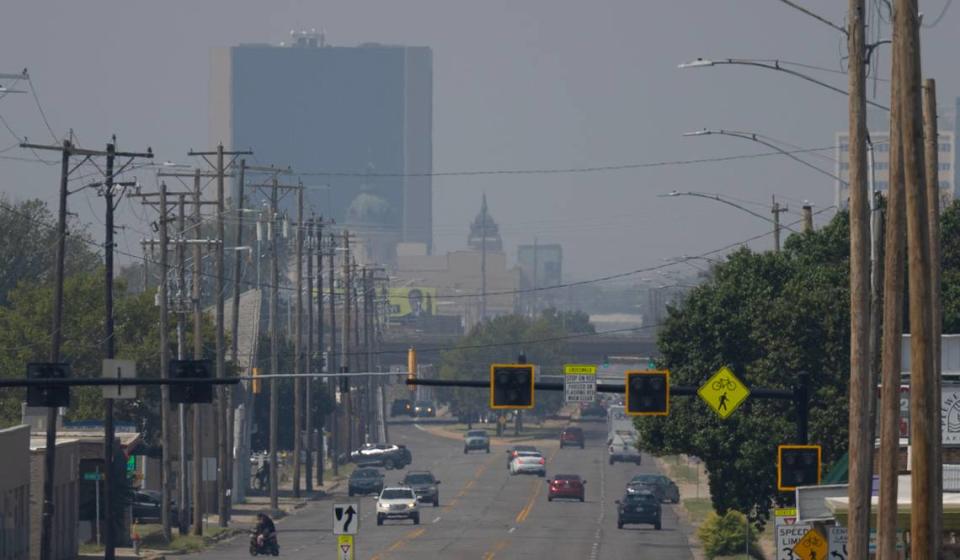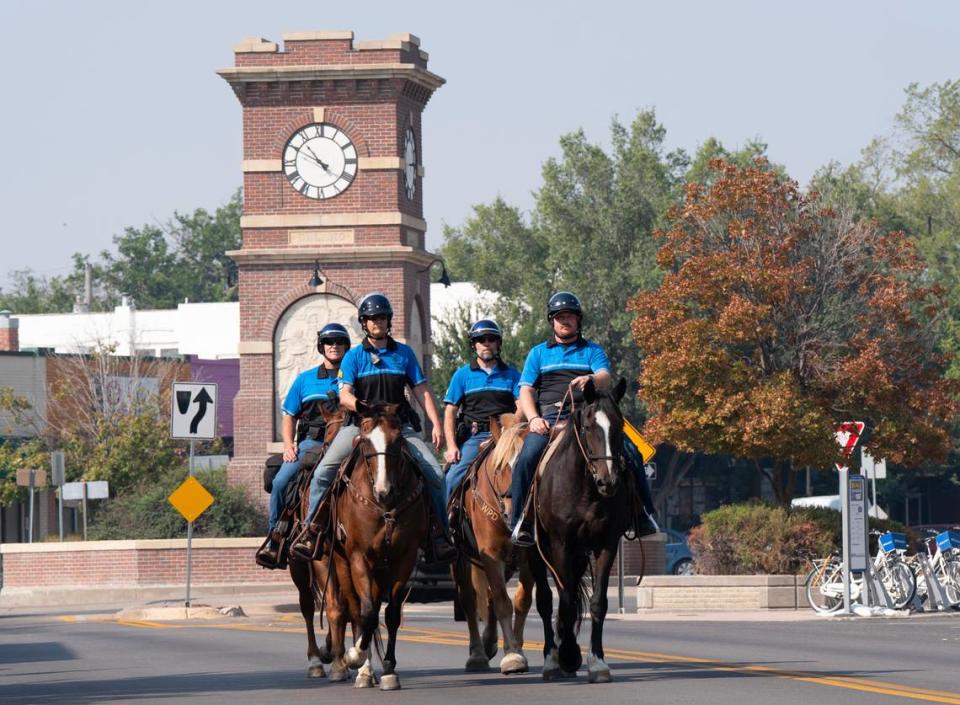Wichita sees ‘unhealthy’ air quality from US fires. What poor conditions mean for you
Wichita officials have encouraged people to stay inside Wednesday due to unhealthy air quality in the area.
As of 10 a.m., the air quality measured 166 on the Air Quality Index, according to the Kansas Department of Health and Environment. For context, one calculator says spending one eight-hour day breathing air measuring 166 AQI would be the equivalent to smoking 1.4 cigarettes.
The poor air quality is thought to be caused by fires in the northwestern U.S., the city said in a Wednesday morning social media post.

Wildfires in Washington State, Oregon and Canada have resulted in evacuations and at least one death, the New York Times reports. One Oregon fire has burned more than 10,000 acres, according to the Aug. 21 report.
A northwest fire tracking agency’s large fire interactive map still shows multiple fires burning in Washington and Oregon. Current information on each of the fires can be viewed on the center’s incident information page. As of Wednesday, the page had information on 18 different fires.
Here’s everything you need to know about Wichita’s air quality and how to stay safe.
Our air quality today is particularly high at 159 AQI which is rated “very unhealthy.” Health effects could be immediately felt by sensitive groups. Avoid outdoor activity as much as possible. The cause at this time is believed to be smoke from fires in the northwestern U.S. pic.twitter.com/ywwEEIg1Es
— City of Wichita (@CityofWichita) September 6, 2023
How is air quality measured?
Air quality is measured using the Air Quality Index, which runs from zero to 500 and measures the amount of pollution in the air.
Poor air quality can be caused by a number of factors, including smoke, vehicle emissions, gas, chemicals and more, according to the National Institute of Environmental Health Sciences. Natural and human-made pollution can cause poor air quality.
Below are all possible AQI measurements and what they mean, according to the National Oceanic and Atmospheric Administration:
Zero to 50: Good
51 to 100: Moderate
101 to 150: Unhealthy for sensitive groups
151 to 200: Unhealthy
201 to 300: Very unhealthy
301 to 500: Hazardous
NOAA reports anyone could experience ill health effects with air quality between 151 and 200. Those in sensitive groups could experience more serious complications.
Staying safe in poor air quality
Seniors, children and those with underlying health conditions are most likely to experience the negative side effects of air pollution.

Health effects can be less severe, like coughing, but research has tied poor air quality to more severe conditions, including cardiovascular disease and cancer. Poor air quality has also been tied to the development of health issues like asthma and chronic obstructive pulmonary disease, according to the NIEHS.
The best thing to do when faced with unhealthy air quality is to stay inside and limit outdoor activity as much as possible. Here are some other safety tips, from the American Lung Association:
When outside, do less strenuous activities. The more active you are outdoors, the more likely it is for you to experience effects of the air quality.
Keep all windows and doors closed.
Run air conditioning on the recirculating setting.
Wearing a mask when outside could also help. The American Lung Association recommends N95 or KN95 masks.
To see the latest air quality measurement, visit airnow.gov, where you can type in your location and see the up-to-date forecast, using data from the Kansas Department of Health and Environment.

